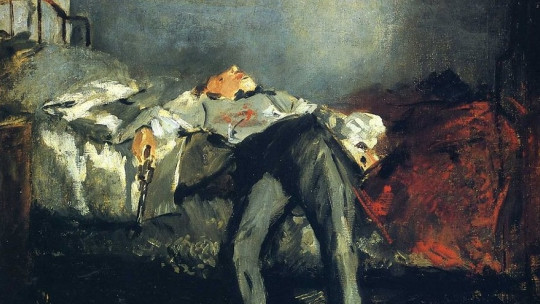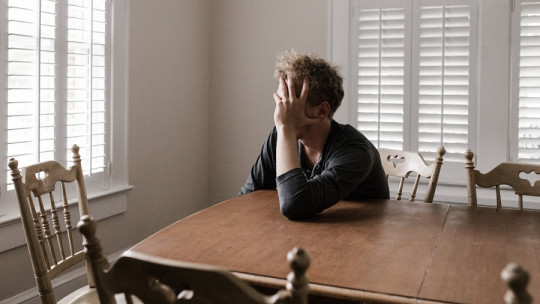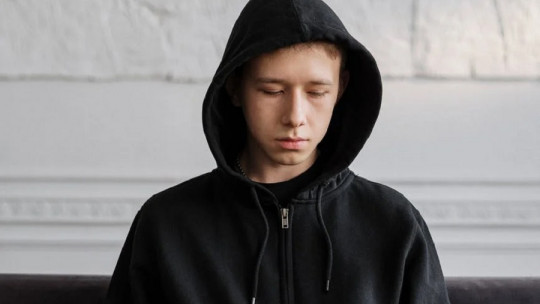
One thing is certain: a priori, practically no person wants to die. The vast majority of people conceive the death process as the most terrible thing that can happen to an individual. We humans, in our constant desire to possess total “omnipotence” (in addition to strong ideals of transcendence), long for permanence in life.
For the suicidal person, however, death takes on a special meaning.. Their way of thinking about death is very different from that of the vast majority, and that influences their behavior and attitudes.
Death, according to suicides
There are two different ways in which suicidal people can conceptualize death. They are the following.
An emergency exit
Here, the suicidal person understands death as the liberation from the bonds and difficulties of life, a change to move on from what was experienced in another existential plane imagined and characterized by the absence of suffering.
Suicide can be planned and carried out as a way to free oneself from those problems that suffocate that person. ”I can’t take it anymore”, “I’m tired of this suffering”, etc. These are just some of the statements that the person in crisis formulates in the deepest moments of his ideation, although he does not have to express them openly. The possibility of committing the act is seen as an emergency exit since his personal, family or social situation becomes practically unbearable.
For the individual, what he or she will encounter after death is not as important as the fact of getting away from something: pain, grief, suffering of family members and loved ones, etc. The really important thing is to get out of your state once and for all, cross that “dead end” in which you find yourself. The main objective of committing the suicidal act is to overcome the present anxiety quickly.
Suicide seen positively
For others, suicide may have a different objective than the previous one: to make a change, either in oneself or in the environment in which the suicidal person finds themselves. From this other vision, the important thing is not to free oneself from that situation of anguish but rather to focuses on what the person wants to achieve: tranquility, peace, happiness…
In this case, the concept is transformed into a kind of portal into which the subject enters to obtain a more harmonious and pleasant life experience (on a transcendental level). Due to the above, although it may seem illogical and confusing, it is possible to affirm that for these people The main objective of committing suicide is to live fully, although it may sound paradoxical..
From the vision already mentioned, suicide would become the gateway to a new life where tranquility and emotional peace are the protagonists, in addition to preparing the new stage of life and moving on to another in which there will be neither the anguish or suffering that may occur at some point in the present life. It would be something like returning to that security of the mother’s womb.
Thus, the act of suicide can be explained by a channel towards rejection of life, or by a prompt approach towards death itself.
Suicidal reasoning: a curious contradiction
In the existing plot of suicide, life and death are the protagonists of the drama. Between these two poles the decision to end one’s own life is made; In the suicidal dialectic, the fear of living and suffering, on the one hand, and the fear of dying on the other, would be the two extremes of existence.
The objective, then, is to die, but also to begin to live in a different way.. Various authors affirm that suicidal behavior is, first of all, an act of life and not death. He who wishes to commit suicide longs to be free from his problems, to change existing circumstances or to return to a state of security; however, deep down in his being lies a fervent desire to live.
A form of hope?
Other scholars of the phenomenon consider that suicide means hope, hope to continue living in full peace and tranquility. With the above, suicide becomes the way to eliminate existing hopelessness, suffocating depression and permanent guilt. It is also a way to disappear, but remaining in the consciousness of family and friends as a painful memory that is difficult to overcome.
At the extreme of those who observe life, there is the great spectrum of those people who manifest a first symptom of general malaise identified as “denial of life” and disqualification of oneself, which produces a deep desire not to live. , not exist anymore.
It is from this moment when there is a sudden turn towards death: from the constant desire to die to the desire to commit suicide, and from this to suicide. As we approach the extreme of death, the experience of suicidal thoughts becomes stronger and the risk of self-destruction is higher.








